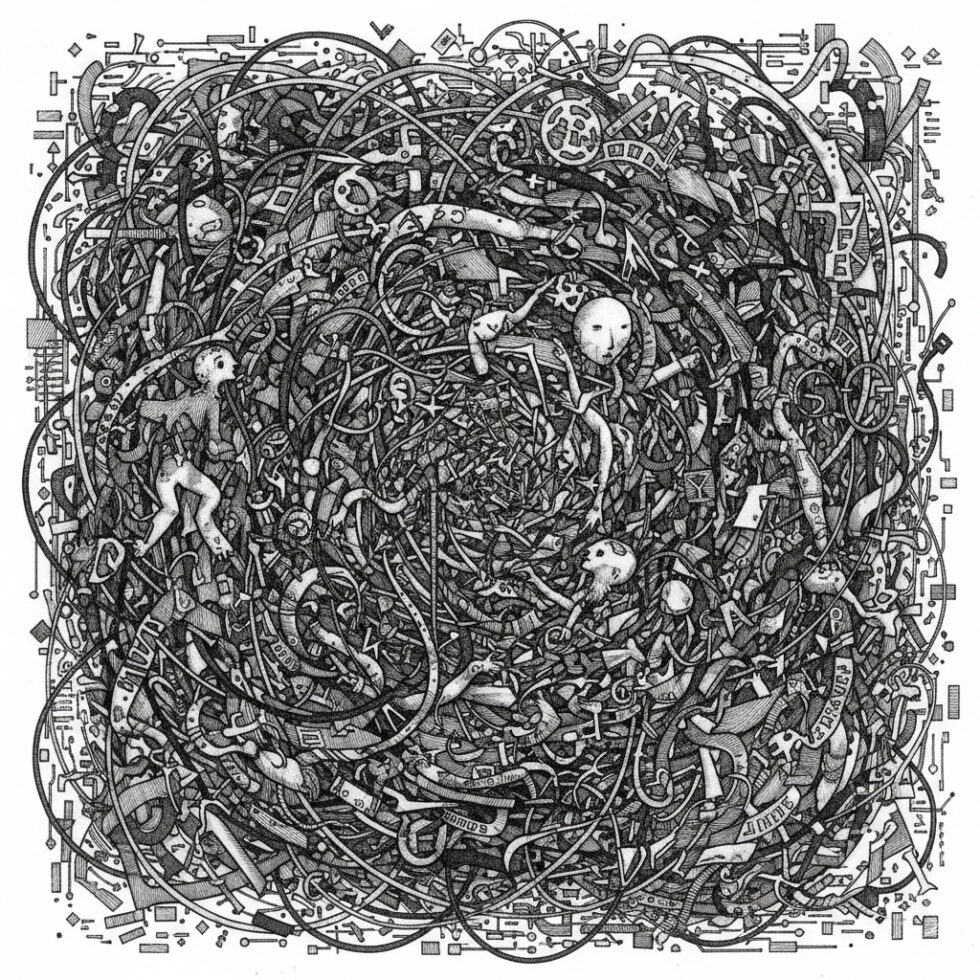
Product teams move fast when uncertainty is low and the next step is obvious. In modern software, that “next step” often gets lost in tool sprawl, policy gates, and handoffs. Platform engineering aims to give teams a paved road—clear workflows and sensible defaults—so they can ship safely with less ceremony. But paved roads only work if people choose to drive on them. This article explains what an internal platform is, why it matters now, and how to build one developers actually use.
What Platform Engineering Really Means
Platform engineering is the discipline of designing and operating a company’s shared internal developer platform (IDP). It is not just the tools; it’s the product thinking behind the experience of getting work done: how services are created, how they are tested and deployed, how they are observed and governed, and how teams interact with security and compliance.
Think of it as a set of self-service workflows and guardrails. The platform offers a small set of well-supported paths—“paved roads”—for common tasks, and it makes the safe thing the easiest thing. Everything else remains possible, but the smoothest ride is on the road you maintain.
Why Now?
- Cloud sprawl: So many services, roles, and policies that a new engineer needs a map and a translator.
- Compliance pressure: Security and privacy rules are stricter; evidence collection can’t depend on heroics.
- Cost focus: Margins sharpen. FinOps needs predictable, trackable environments.
- Delivery fatigue: Tickets, handoffs, and waiting erode morale and speed. Teams need autonomy with safety.
Core Principles That Make Platforms Work
Platform as a Product
A successful platform has a roadmap, a backlog, an adoption funnel, and a support model. Its customers are your engineers, data scientists, and operations teams. Use user interviews, journey maps, and usage analytics to improve the experience rather than adding tools by habit.
Golden Paths, Not Golden Cages
A golden path is a recommended sequence of steps with defaults that work out of the box. It’s opinionated but not restrictive. Offer escape hatches. Make it straightforward to diverge when teams need to, but show the cost and trade-offs clearly.
Self-Service with Sensible Guardrails
Self-service should not mean “you’re on your own.” Encode policy as code, auto-provision least-privilege identities, and enforce security checks in the flow where they are least painful. The platform should feel like a helpful co-pilot, not a bouncer.
Measure Outcomes, Not Tool Count
Choose a small number of metrics tied to outcomes: lead time for change, time to first successful deploy, change failure rate, and mean time to recovery. Add adoption metrics like “percentage of services created via templates” and developer NPS to test whether your paved roads are attractive.
The Platform Architecture in Plain Language
A typical platform has two layers:
- Control plane: Where templates, policies, catalogs, and workflows live. This is your IDP or portal, your CI/CD orchestration, identity, and governance.
- Execution plane: Where code runs—clusters, serverless, data platforms, queues, and storage. The platform selects, provisions, and connects these resources.
Key Building Blocks
1) Service Catalog and Discovery
The catalog is the source of truth for services, teams, ownership, and dependencies. It powers scorecards, on-call routing, and incident response. It’s the backbone of your portal.
2) Scaffolding and Templates
Templates generate new services, jobs, or pipelines with batteries included: CI, tests, Dockerfiles, observability, and security checks wired in. Good templates save hours on every new repo.
3) CI/CD as a First-Class Workflow
Build pipelines should use clear stages and artifacts that are easy to trace. Deployment should be progressive by default—canary, blue/green, or feature flags—so the risk is controlled.
4) Policy as Code
Security and compliance rules live in version control, not on a wiki. Policies check configs, manifests, and entitlements at submit, merge, and deploy time. Violations explain “what to fix” and “why it matters.”
5) Observability and SLOs
Telemetry spans from code to customer. Traces link requests across services. Metrics define service-level objectives (SLOs). Logs help during incidents. Make dashboards part of the template so every new service starts visible.
6) Developer Identity and Secrets
Use short-lived credentials, workload identities, and service-to-service trust that doesn’t rely on a static secret on disk. Rotate keys automatically. Make the secure path the lazy path.
A Minimal Viable Platform (MVP) That Delivers Value Fast
Start with the highest-friction journey in your company. For many teams, that’s “create a new service and ship it to production.” Build an MVP that makes this journey a one-click experience in your portal, with the following included:
- Template for a standard service (web, API, or worker) with tests and containerization
- Pipeline for build, test, scan, and deploy with environment promotion
- Observability (traces, metrics, logs) wired to a default dashboard
- Default policy checks for dependencies, configs, and infrastructure
- Runbook scaffold and ownership metadata added to the catalog
Ship this MVP to one pilot product team. Watch where they stumble. Improve the paved road. Repeat with a second team from a different domain to test generality.

Designing Golden Paths That Teams Choose
Golden Path: New Service
A developer opens the portal, chooses “New Service,” picks a template, and answers a few prompts. The platform creates a repo, seeds code, sets up CI, and deploys to a sandbox. It registers the service in the catalog, assigns ownership to the team, creates alerts, and generates a baseline SLO. The developer sees a link to their sandbox, a dashboard, and a checklist to production. No tickets, no waiting.
Golden Path: Exposing an API
For services that publish APIs, the template sets up structured API definitions by default. A gateway enforces auth and rate limits. Documentation is generated and published automatically to the portal’s API catalog. Consumer approval can be automated with usage plans and scopes.
Golden Path: Data Job
Data teams get a path for ETL jobs that includes schemas, lineage tracking, and resource quotas. Jobs run with least privilege and produce audit logs for compliance. Versioned data contracts prevent silent breaking changes downstream.
Golden Path: Ephemeral Previews
Every pull request spins up a preview environment with the branch build, seeded test data, and a link posted back to the PR. Product and design stakeholders can click, test, and comment before merge. Previews delete automatically when the PR closes.
Governance Without Roadblocks
From Gates to Guardrails
Instead of a giant “GO/NO-GO” meeting, move checks into the workflow as small, fast validations. Examples:
- Dependency checks: Block known-vulnerable versions at merge time with clear remediation hints.
- Config checks: Prevent public buckets or privileged containers at deployment time.
- Runtime checks: Enforce network policies and egress controls dynamically.
Every failed check links to docs in the portal. If a temporary exception is needed, the platform gathers context, auto-approves low-risk waivers, and routes higher-risk ones with rich data for faster review.
Built-In FinOps
Costs should be visible to teams, per service, at least daily. Tie budgets and quotas to namespaces or projects. Offer cost-aware templates that scale to zero when idle and default to right-sized resources. Post budget drifts to team chat with suggestions like “switch instance class” or “enable autoscaling.”
Sensible Technology Choices
You can assemble a modern platform from proven open standards and tools. The names matter less than the interfaces and contracts between them.
Infrastructure and Runtime
- Compute: Containers in clusters, serverless functions, or managed batch for jobs.
- Networking: Service mesh for service-to-service auth and traffic shaping where needed.
- Storage: Managed databases with clear patterns for migration and access control.
Delivery and Orchestration
- CI: Runs tests, builds images, and publishes SBOMs.
- CD: Declarative deployments, progressive rollouts, and automated rollbacks.
- GitOps: Environments reflect the state of a repo; drift is detected and reconciled.
Observability
- Tracing: Standardized spans added in templates so traces work on day one.
- Metrics: Service-level metrics and business SLIs are part of the sample code.
- Logging: Structured logs with correlation IDs across services.
Security and Policy
- Identity: Short-lived tokens and workload identities, not shared long-lived keys.
- Policy: Declarative rules to check infra, manifests, and runtime behavior.
- Secrets: Managed vault with automatic rotation and per-service scopes.
Developer Experience
- Portal: A single home for templates, docs, scorecards, and service ownership.
- Scaffolding: Multi-language templates with quickstarts and embedded guidelines.
- CLI and APIs: Everything in the portal is also scriptable to fit local workflows.
Avoiding Common Traps
Trap 1: Tool Showcase Instead of Value
Adding a dozen tools without a coherent flow increases cognitive load. Always tie new components to a specific, high-traffic developer journey and measure the improvement.
Trap 2: TicketOps Disguised as Self-Service
If the “self-service” button opens a form that creates a ticket for a human to handle, you still have a queue. Automate the whole path or be honest about the constraints and work to remove them.
Trap 3: Over-Abstraction
Hiding all platform details makes advanced debugging impossible. Provide sensible defaults but keep the layers visible. Let teams drop down a level when they need to.
Trap 4: Big-Bang Rollouts
Platforms fail when they try to solve everything at once. Start with one journey, one team, and a shippable MVP. Build trust by removing pain fast, then expand.
Trap 5: Lock-In by Accident
Prefer portable interfaces. Use open standards for telemetry, policy, and APIs. When a managed service is the best choice, document the exit path and keep core concerns in your control plane.
The Human Side: Teams and Roles
Product Mindset for Platform Teams
Give the platform team a clear mission: reduce cognitive load and accelerate safe delivery. Partner them with security and operations. Hold regular office hours. Run quarterly roadmap reviews with internal customers.
Team Topologies That Fit
Many companies succeed with a platform team serving multiple stream-aligned teams. For specialized needs, add enabling teams that jump in temporarily to help migrate or uplift practices. Avoid permanent bottlenecks; prefer teaching and automation.
Documentation That People Actually Read
Docs live next to code, generated as part of templates. Keep pages short and practical. Insert links into the flow—pipeline failures should point to the exact fix. The portal is your front door, not a bookshelf.
Security Built In: Zero Trust Meets Day-2 Reality
Zero trust is easier to say than to do. The platform can make it tangible:
- Workload identity: Services get cryptographic identities and talk over mTLS.
- Policy guardrails: Deny public egress by default; allow with explicit policy.
- Software supply chain: SBOMs, signature verification, and provenance checks at deploy time.
- Secrets hygiene: No secrets in repos; rotate on incident or periodically without drama.
Make the secure choice the low-friction choice. That’s the essence of ZeroTrustOps inside a platform.
Cost and Performance Without Guesswork
Performance tuning and cost control belong in the platform by design, not as an afterthought. Bake in:
- Right-sizing advice in templates and dashboards, based on historical usage
- Autoscaling defaults that protect both latency and budget
- Cost per request or per job in team dashboards, so trade-offs are visible
- Environment TTLs for sandboxes and previews to prevent zombie spend
Extending Beyond Apps: Data and Batch Workloads
Platform thinking applies to data and batch jobs too. Provide a golden path for creating a data pipeline with schema registration, lineage, and access controls. Treat models, dashboards, and datasets as first-class catalog entries with ownership and SLOs. Give batch jobs their own scaled environments and quotas, visible in the same portal.
Buy, Build, or Compose?
Most teams do a bit of each. A pragmatic approach:
- Buy the commodity pieces that you won’t differentiate on (e.g., hosted observability or secrets management) if reliability and support matter more than fine control.
- Build the glue—the workflows and experiences—that make your paved roads unique to your org.
- Compose your portal with plugins for catalog, scaffolding, scorecards, and docs rather than rolling your own from scratch.
What you own long-term is the experience and the interfaces, not every implementation detail.
A 90-Day Starter Plan
Days 1–30: Map and Decide
- Interview 10 engineers and 3 managers. Identify the longest, most painful journey.
- Define your first golden path and the smallest toolset to deliver it.
- Pick the catalog, scaffolding, and policy components you will standardize on.
Days 31–60: Ship the MVP
- Build a portal page with “New Service” that creates repo, CI, deploy, and observability in one click.
- Wire in policy checks with friendly messages and links to fixes.
- Pilot with one team. Document every friction point and time saved.
Days 61–90: Prove and Expand
- Measure time to first deploy, adoption rate, and user sentiment.
- Close the top five issues. Add ephemeral preview environments.
- Select the next golden path (API publishing or data job) and repeat.
What Good Looks Like in Six Months
- 80% of new services start from templates; time to first prod deploy under a day.
- Every service has an owner in the catalog, an SLO, and a runbook link.
- Policy violations are down and fixes happen without tickets.
- Preview environments are routine; product feedback arrives before merge.
- Cost per service is visible; spend anomalies trigger helpful nudges, not blame.
What Comes Next
Platforms are becoming composable control planes—collections of capabilities you can rearrange as the business changes. Expect richer policy beyond infrastructure (e.g., data residency, API contract linting), stronger software supply chain checks by default, and scorecards that reflect operational and business health together.
Lightweight assistants will also appear inside portals to help pick templates, interpret failing checks, or suggest rollbacks. Keep them optional and transparent. The experience, not the hype, should lead.
Summary:
- Platform engineering creates paved roads—self-service workflows plus guardrails—to reduce cognitive load and ship safely.
- Treat the platform as a product: interview users, measure outcomes, and iterate in small slices.
- Anchor on a service catalog, templates, CI/CD, policy as code, and built-in observability.
- Govern with guardrails, not gates; make security and cost controls the easy path.
- Start with a minimal viable platform focused on one painful journey, then expand.
- Avoid tool sprawl, ticket disguised as self-service, and over-abstraction.
- Zero trust becomes practical when identity, policy, and supply chain checks are built-in.
- Measure adoption and DORA-style delivery metrics to prove value and guide the roadmap.
External References:
- Backstage: An open platform for building developer portals
- OpenTelemetry: Vendor-neutral APIs and SDKs for observability
- Open Policy Agent: Policy as code for cloud-native environments
- Kubernetes: What is Kubernetes?
- Istio: Service mesh overview and docs
- Google SRE Book: Table of contents
- Team Topologies: Patterns for organizing technology teams
- Argo CD: Declarative GitOps for Kubernetes
- OpenFeature: Open standard for feature flagging
- Cilium: eBPF-based networking, security, and observability
- Kyverno: Kubernetes native policy management





